 W
WThe Sidekick data outage of 2009 resulted in an estimated 800,000 smartphone users in the United States temporarily losing personal data, such as emails, address books and photos from their mobile handsets. The computer servers holding the data were run by Microsoft. The brand of phone affected was the Danger Hiptop, also known as the "Sidekick", and were connected via the T-Mobile cellular network. At the time, it was described as the biggest disaster in cloud computing history.
 W
WActiance Inc was an American-based multinational corporation that developed the platforms required to enable the security, management and compliance of unified communications, Web 2.0 and social media channels. Headquartered in Redwood City, California, Actiance supported all leading social networks, unified communications providers and Instant Messaging platforms, including Facebook, LinkedIn, Twitter, AOL, Google, Yahoo!, Skype, Microsoft, IBM and Cisco.
 W
WAgbogbloshie is a nickname of a commercial district on the Korle Lagoon of the Odaw River, near the center of Accra, Ghana's capital city in the Greater Accra region. Near the slum called "Old Fadama", the Agbogbloshie site became known as a destination for externally generated automobile and electronic scrap collected from mostly the western world. It was alleged to be at the center of a legal and illegal exportation network for the environmental dumping of electronic waste (e-waste) from industrialized nations. The Basel Action Network, a small NGO based in Seattle, has referred to Agbogbloshie as a "digital dumping ground", where they allege millions of tons of e-waste are processed each year.
 W
WA biometric passport is a traditional passport that has an embedded electronic microprocessor chip which contains biometric information that can be used to authenticate the identity of the passport holder. It uses contactless smart card technology, including a microprocessor chip and antenna embedded in the front or back cover, or centre page, of the passport. The passport's critical information is printed on the data page of the passport, repeated on the machine readable lines and stored in the chip. Public key infrastructure (PKI) is used to authenticate the data stored electronically in the passport chip, making it expensive and difficult to forge when all security mechanisms are fully and correctly implemented.
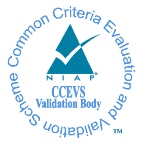 W
WCommon Criteria Evaluation and Validation Scheme (CCEVS) is a United States Government program administered by the National Information Assurance Partnership (NIAP) to evaluate security functionality of an information technology with conformance to the Common Criteria international standard. The new standard uses Protection Profiles and the Common Criteria Standards to certify the product. This change happened in 2009. Their stated goal in making the change was to ensure achievable, repeatable and testable evaluations.
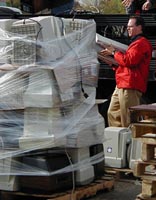 W
WComputer recycling, electronic recycling or e-waste recycling is the disassembly and separation of components and raw materials of waste electronics. Although the procedures of re-use, donation and repair are not strictly recycling, these are other common sustainable ways to dispose of IT waste.
 W
WThe First Department was in charge of secrecy and political security of the workplace of every enterprise or institution of the Soviet Union that dealt with any kind of technical or scientific information or had printing capabilities.
 W
WThe Gordon–Loeb model is a mathematical economic model analyzing the optimal investment level in information security.
 W
WHard privacy technologies are methods of protecting data. Hard privacy technologies and soft privacy technologies both fall under the category of privacy enchancing technologies. Hard privacy technologies allow online users to protect their privacy through different services and applications without the trust of the third-parties. The data protection goal is data minimization and reduction of the trust in third-parties and the freedom to conceal information or to communicate.
 W
WIT Risk Management is the application of risk management methods to information technology in order to manage IT risk, i.e.:The business risk associated with the use, ownership, operation, involvement, influence and adoption of IT within an enterprise or organization
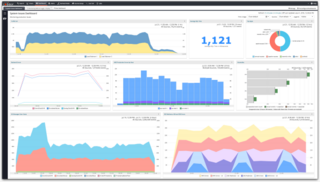 W
WSolarWinds Loggly is a cloud-based log management and analytics service provider based in San Francisco, California. Jon Gifford, Raffael Marty, and Kord Campbell founded the company in 2009, and Charlie Oppenheimer was the CEO of Loggly until its announced acquisition by SolarWinds on January 8, 2018.
 W
WMISP Threat Sharing (MISP) is an open source threat intelligence platform. The project develops utilities and documentation for more effective threat intelligence, by sharing indicators of compromise. There are several organizations who run MISP instances, who are listed on the website.
 W
WIn 1991, John McCumber created a model framework for establishing and evaluating information security programs, now known as The McCumber Cube. This security model is depicted as a three-dimensional Rubik's Cube-like grid.
 W
WMyDLP is a data loss prevention solution originally available released as free and open source software. Supported data inspection channels include web, mail, instant messaging, file transfer to removable storage devices and printers. The MyDLP development project originally made its source code available under the terms of the GNU General Public License.
 W
WIn network security a screened subnet refers to the use of one or more logical screening routers as a firewall to define three separate subnets: an external router, that separates the external network from a perimeter network, and an internal router that separates the perimeter network from the internal network. The perimeter network, also called a border network or demilitarized zone (DMZ), is intended for hosting servers that are accessible from or have access to both the internal and external networks. The purpose of a screened subnet or DMZ is to establish a network with heightened security that is situated between an external and presumed hostile network, such as the Internet or an extranet, and an internal network.
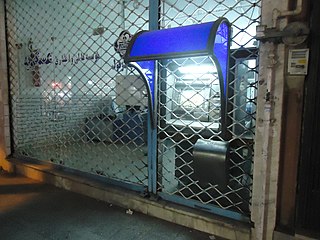 W
WAutomated teller machines (ATMs) are targets for fraud, robberies and other security breaches. In the past, the main purpose of ATMs was to deliver cash in the form of banknotes, and to debit a corresponding bank account. However, ATMs are becoming more complicated, and they now serve numerous functions, thus becoming a high priority target for robbers and hackers.
 W
WSeparation of duties is the concept of having more than one person required to complete a task. In business the separation by sharing of more than one individual in one single task is an internal control intended to prevent fraud and error. The concept is alternatively called segregation of duties or, in the political realm, separation of powers. In democracies, the separation of legislation from administration serves a similar purpose. The concept is addressed in technical systems and in information technology equivalently and generally addressed as redundancy.
 W
WSplunk Inc. is an American technology company based in San Francisco, California, that produces software for searching, monitoring, and analyzing machine-generated data via a Web-style interface.
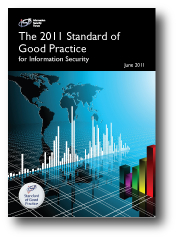 W
WThe Standard of Good Practice for Information Security, published by the Information Security Forum (ISF), is a business-focused, practical and comprehensive guide to identifying and managing information security risks in organizations and their supply chains.
 W
WTitan Rain was a series of coordinated attacks on computer systems in the United States since 2003; they were known to have been ongoing for at least three years. The attacks originated in Guangdong, China. The activity is believed to be associated with a state-sponsored advanced persistent threat. It was given the designation Titan Rain by the federal government of the United States.
 W
WVerinice is a free and open source information security management system (ISMS) application which can help in creating and maintaining systems for information and security management.
 W
WThis article provides a detailed historic account of the reception and criticism of security and privacy features in the WhatsApp messaging service.